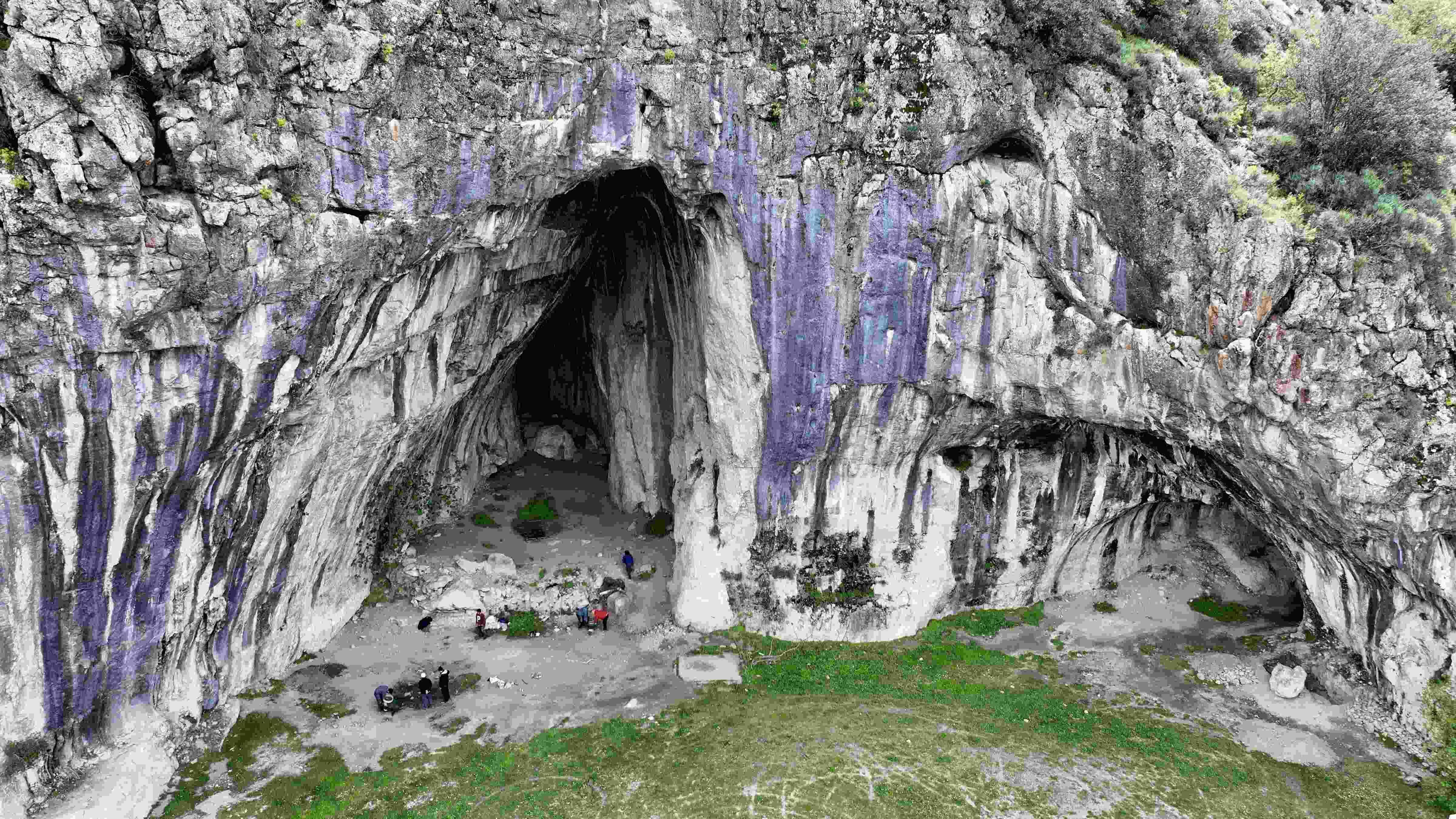
Ancient DNA analysis conducted on skeletons unearthed during excavations at the Girmeler Höyük Settlement in the Seydikemer district of Muğla has revealed the presence of the “early Anatolian gene.”
Excavations are being carried out in Girmeler, with the support of the Culture and Tourism Ministry and Akdeniz University, under the supervision of Professor Taner Korkut and field director Professor Burçin Erdoğu.
Erdoğu told the state-run Anadolu Agency that excavations are underway at the base of a now-eroded mound located in and around the entrances of caves in the Girmeler area.
He stated that the first settlement in Girmeler dates back as far as 14,000 years and that the goal is to identify the earliest habitation layers in order to understand the region’s cultural strata.
Erdoğu explained that findings at the Girmeler site reflect a process that could mark the beginning of agriculture in Western Anatolia: “It appears that people living in Girmeler in the 9th millennium B.C. resided in round-planned huts and tried farming for the first time. Although they were a hunter-gatherer society, evidence shows they experimented with agriculture. This is a very significant development, as it’s the first time such a transition has been observed in Western Anatolia. It had always been assumed that settlements in this region began as a result of east-to-west migration or colonization around 7000 B.C. The findings at Girmeler completely challenge that idea.”
Erdoğu emphasized that the people of Girmeler have now been identified as ancestors of nearly all the early settled farming communities in Western Anatolia.
He noted that they discovered burial sites belonging to the inhabitants of Girmeler, adding, “Ancient DNA analysis was conducted on the skeletons found at Girmeler, which contain the oldest known remains in Western Anatolia. As a result, the early Anatolian gene was identified.”
Erdoğu said that these genes are similar to those found in the Pınarbaşı skeletons from around 17,000 B.C. in Central Anatolia, known as the “Anatolian gene.” He concluded that Girmeler is the ancestral source of all the first agricultural communities in Western Anatolia.
He also highlighted the importance of the site as possibly the first location in Western Anatolia where ceramics and pottery were produced.
Additionally, three special structures were uncovered on the edge of the Girmeler settlement, which are thought to have been used for meetings, ceremonies, or ritual activities. These buildings featured terrazzo floors made by mixing small stones with slaked lime and were decorated with geometric or linear patterns.
One of these special structures contained burials underneath, which Erdoğu said marks another first in the archaeology of Western Anatolia.